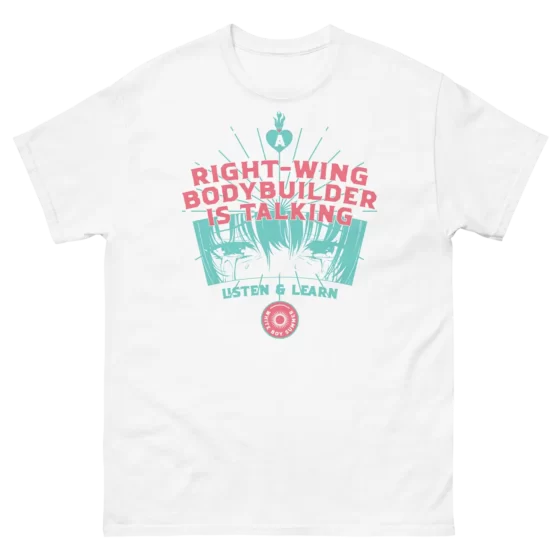Blood Meridian: War and Judgement
Cormac McCarthy’s masterpiece Blood Meridian follows the wanderings of an unnamed protagonist, ‘The Kid,’ whose life spans the settling of the American Frontier. The novel opens with his birth under the Leonid meteor shower in 1833, making him 15 in 1848 when the action begins. The discovery of gold in California that year denotes the “opening” of the frontier, when emigrants began moving West in successive waves, however this novel is concerned with another significant event of that same year, the end of the Mexican-American War. Americas’ victory garnered it vast new territories, including parts of Texas, Arizona, and California, and the action takes place in all of these newly procured lands. The Kids death closes the story, in 1878, at Fort Griffin, Texas. By 1879 Fort Griffin was mostly abandoned, and the American Census Bureau reported that by 1880, the West held no more unsettled territory. The life of The Kid, and the narrative of this novel, follows the birth and death of a distinct era in American history.
The novel plays out during the mapping of these territories, the overlaying of the open wilderness with boundaries, the establishment of pathways for the movement of cattle, goods, capital, and people, the cataloging of all the plants and animals and peoples who live there for either their exploitation, relegation within certain boundaries, or wholesale eradication. When America came into this territory, it was still pregnant with untapped natural resources and ranged over by people and wild animals that lived according to the cyclical patterns of nature that went on unconcerned with the aims of civilization. America’s mission was to fill the west with emigrants and stratify it with layers of gridwork, from property lines and excavation tunnels to railways, bridges, fencing, and telegram cables. In other words, what went on in those years was the building of civilization from the ground up, carving order out of chaos and then establishing the parameters to keep chaos gone for good. The Kid serves as a vector through which all of this passes, and although he acts, his actions have no major consequences for the circumstances in which he finds himself; rather he is caught up and carried along by the currents of History.
Before the West can be “settled,” however, it must be pacified, and the majority of the book is concerned with this process. Early in the novel, The Kid takes up first with Captain White and his band of filibusterers, and later the scalp-hunting Glanton Gang, with whom he wanders. They range over open territory in search of plunder, and when that proves out of their grasp, they continue to wander until their dissolution, and even after that The Kid continues wandering, going wherever he can be useful and doing whatever needs to be done. The Gang was made up of outlaws, drifters, and military veterans, and The Kid himself was a runaway. Just as the winds and rains blow wildly across the plains and the open dessert, or herds of animals roam freely, so too does the Glanton Gang range directionless around Northern Mexico. Like the plains Indians who cyclically follow the buffalo across the steppe, the Glanton Gang wanders in search of natives to scalp, and when they wear out their welcome in Mexico, they retreat north with no goal and no destination, stopping only at the most convenient place from which they can pilfer emigrants heading west in the gold rush.
Their inherent aimlessness is not insignificant, rather it may be the most important detail about them. These men go wherever their violent impulses take them, where they may be used to earn a living. Established men of trade or office from back east, a city in New England or Ohio, could never commit or withstand the extreme violence necessary for the lives of these men, nor the relentless exposure to the elements and overall deprivation of housing, food, and any other resource for civilized living. The settling of civilization, the confrontation with the Frontier, requires a certain type of man, a man who comes from outside the parameters of domesticity, whose survival is predicated not on the taming of his violent impulses, as it would be for an urban family man, but for the unfettered embellishment of these impulses. In civilization, these impulses would get a man jailed at best, executed at worst, but on the Frontier, repressing them would lead to an even swifter death.
Although these men are required for the pacification of the Frontier, once that is done and the building begins, they become a hindrance. We see this in the novel over and over again. For example, in the beginning when The Kid meets Toadvine they burn down a hotel for no real reason, and soon after when The Kid is denied whiskey for lack of money, he breaks two bottles over the bartenders head and stabs his eye out. The only way they know how to get what they want is violence, and it is expressly for this quality that the Kid is invited first into Captain White’s band and later the Glanton Gang. These qualities cause them to run afoul of the Mexican Government, when they massacre a peaceful settlement of natives and try to pass off the scalps as Apache warriors and, later, try to do the same with the scalps of Mexican citizens. Once they become wanted men they go into villages and their violent impulses are channeled into drinking, whoring, raping, murdering, and thievery; they are repeatedly forced out under a hail of gunfire. Several members are killed this way, others hanged in Sand Diego, and the Gang is eventually almost wiped out by a group of Indians.
Once the Gang is unemployed and on the run, they retreat north and take up residence at a ferry over the Colorado river near Fort Yuma, Arizona. This is one of many real-life events covered in the novel (several major characters are also based on real people). The Gang kills the people running the ferry and begins operating it for their own enrichment, charging exorbitant fees, robbing their customers of all their possessions, and excluding Natives from passage at all. Much of this took place in real life, but what’s not mentioned in the novel is that this ferry was a major portal for emigrants going to California in the gold rush, in fact the primary passage to California from the south and south-west. Therefore, it served as a crucial vector for the civilization-building process America was embarking on, and the Glanton Gang were retarding that progress.
In real life, the Gang also sabotaged or outright murdered the operators of two other fords along the river, and this is what provokes the Yuma Indians to attack the ferry, club Glanton to death and murder several others. As a result of this debacle, the US military sends a contingent of troops to man the ferry and they allow safe passage of emigrants for the next thirty years. Here we see played out in stark detail how their violent nature brings them in direct confrontation with developing civilization, in fact it speeds up the progression of that development by bolstering the bulwarks against men such as themselves. As Nietzsche puts it in Twilight of the Idols, these men are required to build liberal institutions; in fact war itself builds liberal institutions, and the type of man needed to make war is the truly free man. The institutions limit freedom, and they have no room for the man who does not subdue his natural, violent instincts. The men who make up the Glanton Gang, men like The kid, must themselves be forced out of civilization, once it’s up and running.
One of the liberties McCarthy takes with the Yuma Ferry massacre is to depict Judge Holden as fighting his way out by leveling a 12 pound howitzer cannon at the Indians and holding them at bay with it to make his escape. He wields the howitzer with his bare hands (the ball is twelve pounds, the cannon much heavier) as one of several feats that give him a larger than life, perhaps even inhuman character. Much speculation surrounds the Judge, even within the story itself, where one character remarks that he’s never presided over any court cases, that no one knows exactly what he’s a judge of. Holden himself waxes philosophical quite a lot about war and the warrior type, some amalgamation of Nietzsche and Heraclitus and maybe some of McCarthy’s own impressions. “It makes no difference what men think of war, war endures.” But there’s something more to the Judge, something that stirs great curiosity and confusion in the men, and that is his knowledge and study of nature, the way he knows how to make gunpower from bare materials at hand, the way he sketches plants and takes samples of dead things and saves them for study.
Wrapped up in this one character is the generative power of war, and that is what this novel is about. It is a pre-apocalyptic novel, in which nature is examined, captured, and exploited by men who must make war upon it and its inhabitants in order to make way for the civilization that is to come. But these men, as we’ve seen, have no place within that civilization, in fact they threaten its very existence. They must be removed, just as the Judge says. War’s nobility becomes dishonored once the dance of civilization begins, and the warrior must be subtracted. Once the warrior is removed, the dance becomes a false dance and the dancers false dancers: they are no longer free men, as Nietzsche might call them, they are simply herd animals. And they need a Judge to determine who among them is a threat, and it is his duty to remove them. Once the West is closing, the Judge hunts down and finds The Kid and must murder him; these walking pockets of wilderness must be tamed. Note a dancing bear is also murdered at the same time.
Death stalks the Crusader in The Seventh Seal, who outlived his time of war and now tries to return to peaceful society; the Judge stalks The Kid as the closing of the west draws near. Judge Holden cannot allow a warrior to walk among the merchants and the politicians, the farmers and the women. Holden mocks and taunts The Kid in a paradoxical way, from an angle antithetical to the reason he must kill him. He tells the kid he wasn’t cut out for war, that he suppressed his nature when he showed, or tried to show, mercy to several characters along the way, that he wasn’t made of the right stuff for the life they had lived. Interestingly, the Judge must remove him from the dance for the exact opposite reason: The Kid represents an earlier, freer time, an era when a man was allowed – required – to cultivate his killer instinct and use his violent nature to conquer the wild and carve order out of chaos. As Nietzsche says, and Blood Meridian describes in bloody detail, liberal institutions have no place for this man with the wilderness within him.
































